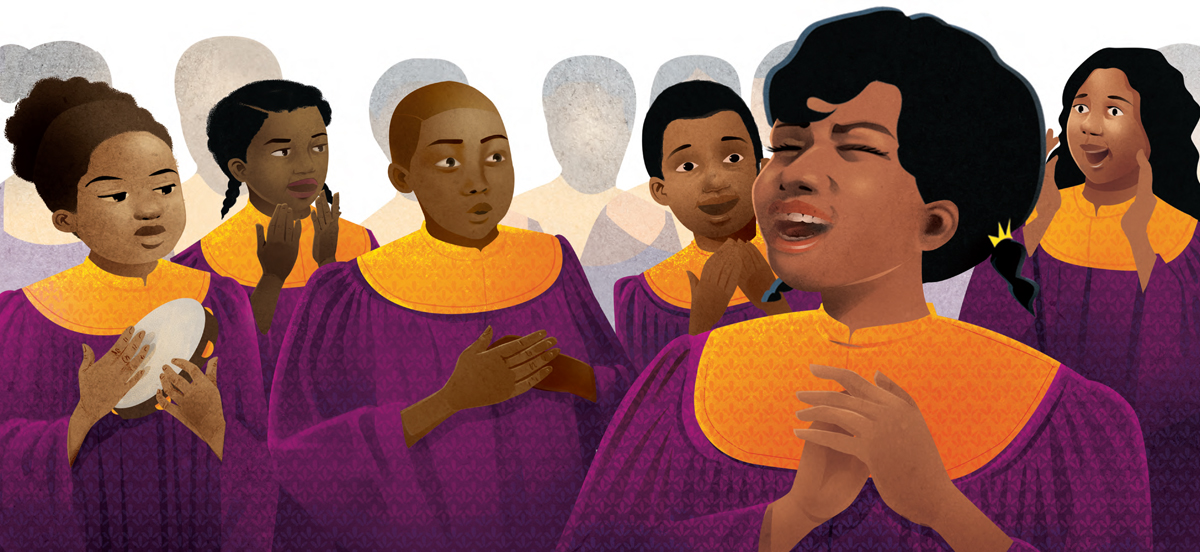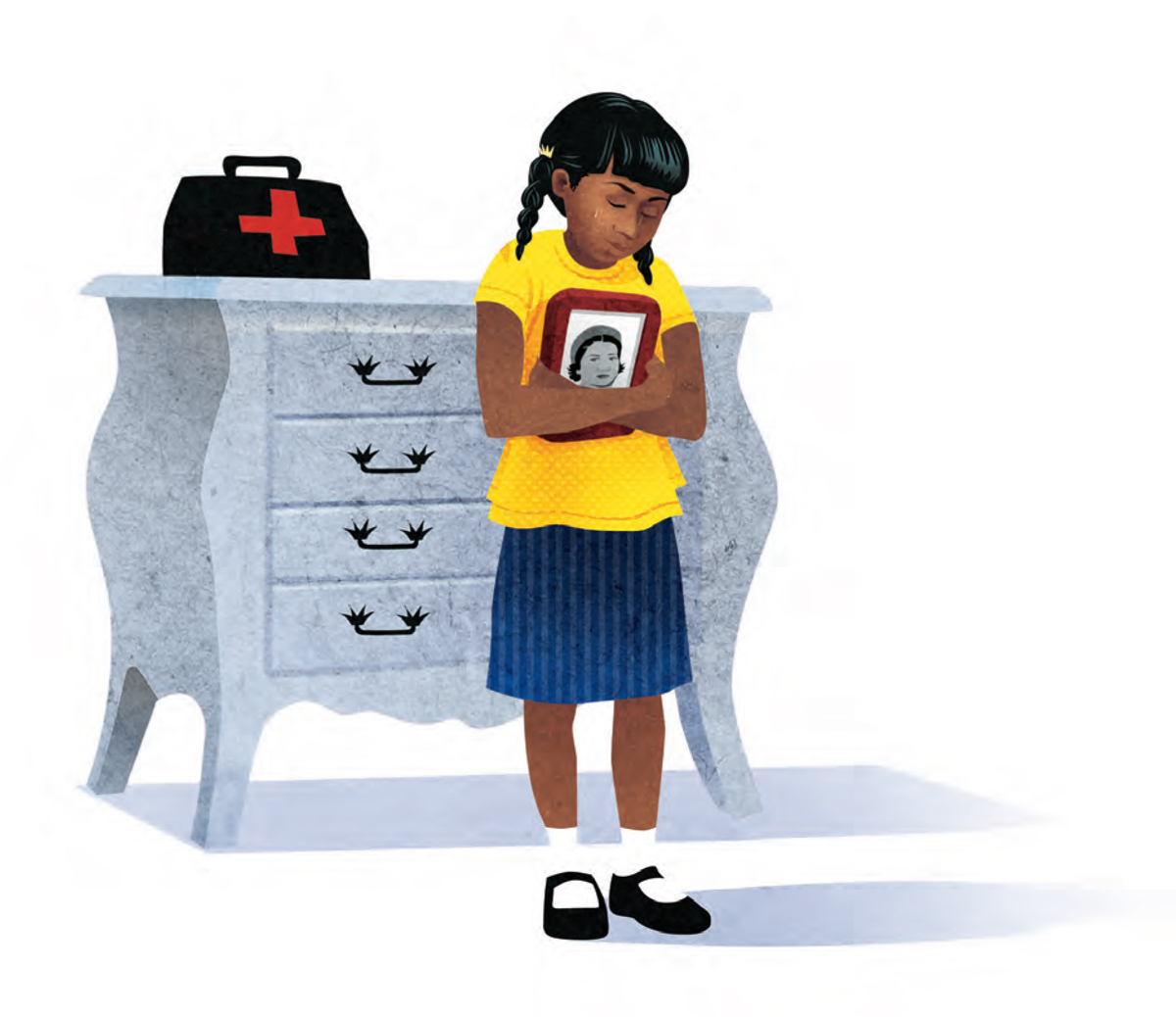To my mother, Tanya H. Russell (19382014), who said many times, with a twinkle in her eye, that she would know she had died and gone to heaven if she could sing backup for Aretha. I have vivid, warm memories of us singing Arethas songs togetherat the top of our lungs.
K. R-B.
For Roberta,
fabulous in every way.
A great singer, a wonderful sister, and an even better friend.
My very own Diva.
L. F.

BLOOMSBURY CHILDRENS BOOKS
Bloomsbury Publishing Inc., part of Bloomsbury Publishing Plc
1385 Broadway, New York, NY 10018
This electronic edition published in 2020 by Bloomsbury Publishing Plc
BLOOMSBURY, BLOOMSBURY CHILDRENS BOOKS, and the Diana logo are trademarks of Bloomsbury Publishing Plc
First published in the United States of America in January 2020
by Bloomsbury Childrens Books
Text copyright 2020 by Katheryn Russell-Brown Illustrations copyright 2020 by Laura Freeman
All rights reserved
You may not copy, distribute, transmit, reproduce or otherwise make available this publication (or any part of it) in any form, or by any means (including without limitation electronic, digital, optical, mechanical, photocopying, printing, recording or otherwise), without the prior written permission of the publisher. Any person who does any unauthorised act in relation to this publication may be liable to criminal prosecution and civil claims for damages.
Bloomsbury books may be purchased for business or promotional use. For information on bulk purchases please contact Macmillan Corporate and Premium Sales Department at
Library of Congress Cataloging-in-Publication Data
Names: Russell-Brown, Katheryn, author. | Freeman, Laura (Illustrator) illustrator.
Title: A voice named Aretha / by Katheryn Russell-Brown ; illustrated by Laura Freeman.
Description: New York : Bloomsbury Childrens Books, 2020.
Identifiers: LCCN 2019019149 (print) | LCCN 2019021877 (e-book)
ISBN: 978-1-6811-9850-7 (HB)
ISBN: 978-1-5476-0273-5 (eBook)
ISBN: 978-1-5476-0274-2 (ePDF)
Subjects: LCSH: Franklin, ArethaJuvenile literature. | Soul musiciansUnited StatesBiography. | African American singersBiographyJuvenile literature. | SingersUnited StatesBiographyJuvenile literature.
Classification: LCC ML3930.F68 R87 2020 (print) | LCC ML3930.F68 (e-book) | DDC 782.421644092 [B] dc23
LC record available at https://lccn.loc.gov/2019019149
Art created digitally with Photoshop Book design by John Candell
To find out more about our authors and their books please visit www.bloomsbury.com where you will find extracts, author interviews and details of forthcoming events, and to be the first to hear about latest releases and special offers, sign up for our newsletters.

F olks came from miles around to hear Reverend C. L. Franklin preach at New Bethel Baptist Church in Detroit, Michigan. The famous preacher gave soul-stirring sermons that could make you shout, moan, or nod and whisper Amen.

The Franklins big brick house was always brimming with people. And music. Everybody who was anybody, in music and civil rights, visited the Franklin home: Ella Fitzgerald, Duke Ellington, Dinah Washington, and Nat King Cole. Dr. Martin Luther King Jr. was a close friend and a regular guest.
It was in this house, full of talking, singing, and organizing, that a shy little girl named Aretha Louise Franklin grew up.

Aretha and her brothers and sisters loved singing in church, clapping along with the organ, drums, and tambourines. Each young Franklin wanted to shine bright for Daddy.
Little Aretha had the biggest voice of all. She sang soulful trills and powerful riffs with a deep, easy feeling, well beyond her years. No doubt about it, Aretha was the star child.

When Mother Barbara and Daddy Franklins marriage ended, Mother moved back to Buffalo, New York. The children stayed with their father and visited their mother every summer.
Quiet Aretha missed her mother dearly, but she enjoyed watching her care for patients at the hospital where she worked. She cherished the nurses kit Mother gave her.

But in 1952, right before Aretha turned ten, something very sad happened. Her mother passed away. Part of Arethas heart died right along with Mother Barbara.

A few months later, Aretha practiced to sing her first church solo. The week before her performance, she was a bundle of nerves and tears.
When the day came, she stood on a chair and belted out Jesus Be a Fence Around Me. More than a thousand people heard Aretha sing that beautiful, uplifting song. At only ten years old, she figured out a way to draw strength from her sadness.

Music was Arethas calling: Singing it and playing it. She spent hours listening to rhythm & blues, gospel, and jazz records, letting the words and melodies take her imagination to exciting new places. With her uncanny ear for music, when Aretha heard someone sing a tune or play a song on the piano, she could sing it or play it right back, just like that.
Twelve-year-old Aretha joined the Gospel Caravan, Daddy Franklins traveling ministry. Church folks from California to North Carolina marveled at the young girl with the voice of an old soul. Just like her daddys preaching, Arethas singing could move people to jump up, sway, and hum along.

By age eighteen, Aretha was ready to share her talent with the world. She moved to the Big Apple, where she and Daddy Franklin met with Phil Moore, a famous voice coach. After hearing her sing and play the piano, he was an instant fan.
I cant take your money, he told Daddy Franklin. He could see that Aretha already had her own musical style.
Before long, Aretha had signed a deal with a top record company.
Aretha was a songbird ready to fly.


The 1960s were a turbulent time. By law, whites and blacks were separatedin schools, churches, libraries, swimming pools, even graveyards. People wanted change. They marched in the streets, demanding jobs, racial equality, and an end to the Vietnam War.
























